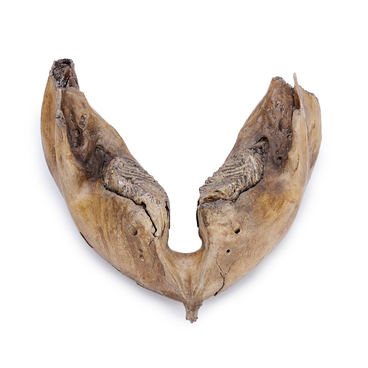Obsidian is natural volcanic glass, effusive (igneous) rock that is formed by the rapid cooling of lava, geological material ejected from the earth’s bowels to the surface. Obsidian is also called Icelandic agate and the devil’s claw.
The chemical composition of volcanic glass depends on the original composition of the magma, so it can vary. The density of this natural material is typically about 2.5 grams per cubic centimeter. The melting point ranges from 1200 to 1500 degrees Celsius.
Natural obsidian comes in a wide variety of colors, from grayish-white to yellow, brown and black, if the magma contains a large amount of magnetite. Since the formation of obsidian is directly connected with volcanic eruptions, it is mined in volcanic zones. In Kamchatka Krai there are more than 100 obsidian and perlite occurrences, which are formed under the influence of underground waters. There are well explored deposits of Nachikinsky, Yagodninsky and Paratunsky. The exhibit from the museum collection came from the Nachikinsky perlite deposit.
The common property that unites obsidian with ordinary glass is its ability to break into narrow fragments with sharp cutting or pricking edges. This feature was of great importance to primitive people. Obsidian played a major role in human history. In those regions where it was available to people, it was used to create a variety of tools, jewelry and even weapons. The ancient inhabitants of Kamchatka used it to make arrowheads and various cutting tools.
Obsidian was also widely
used in ritual ceremonies. Scientists have found sharp Aztec knives made of
polished obsidian, as well as special mirrors, which the Sumerians made of the
same material. Obsidian was applied in different spheres. Perlite, for example,
was used as a building material. People found out that foamed perlite was a
fire-resistant and durable material, which was not subject to decomposition and
rotting. Later, scientists determined that this rock was environmentally safe,
non-toxic, and free of heavy metals.


